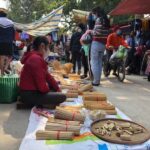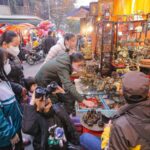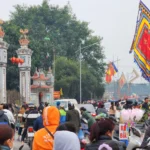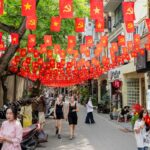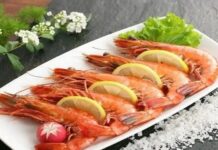After undergoing multiple renovations and embellishments, especially the major renovation in 1707, the temple finally achieved its current architectural grandeur and scale.
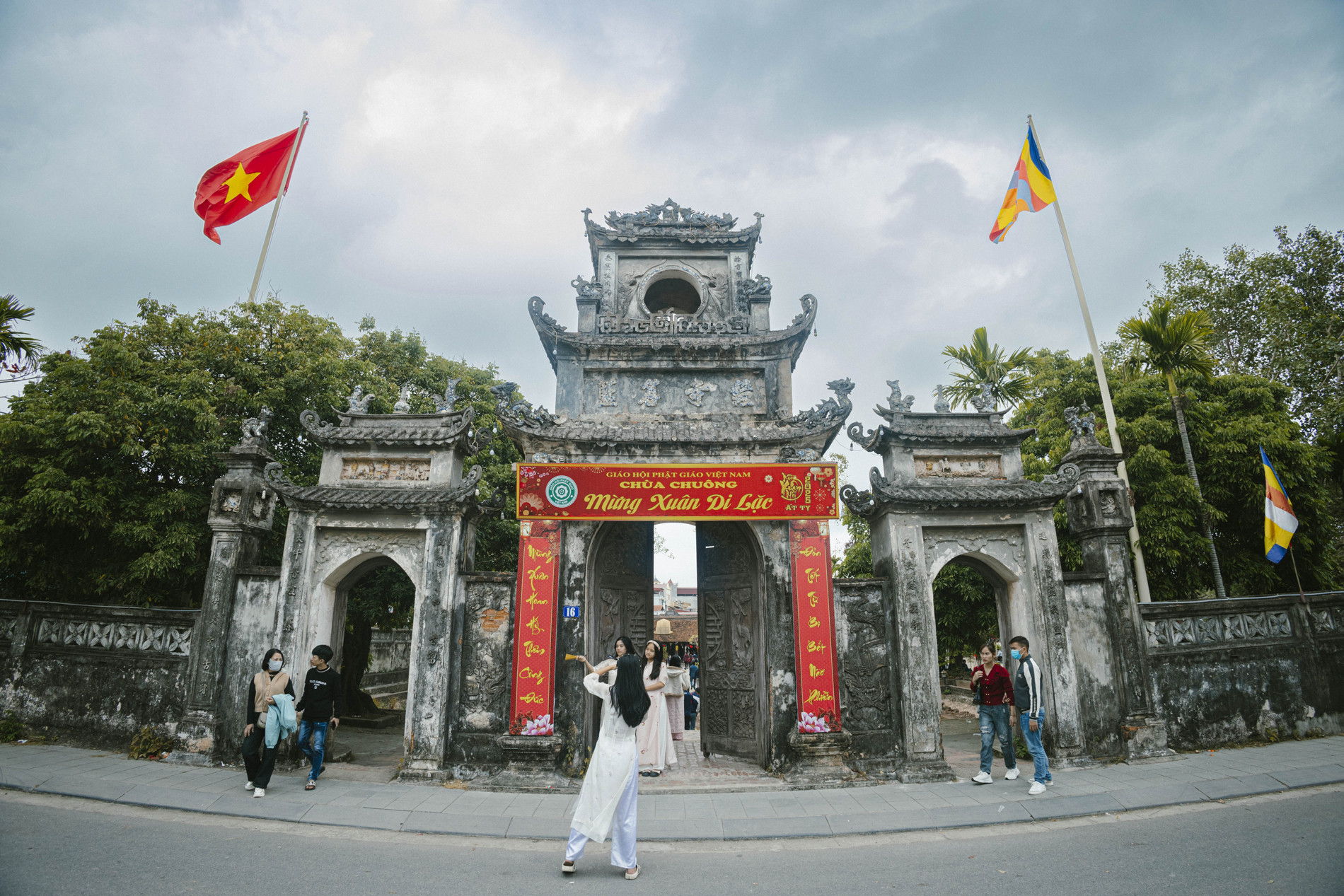
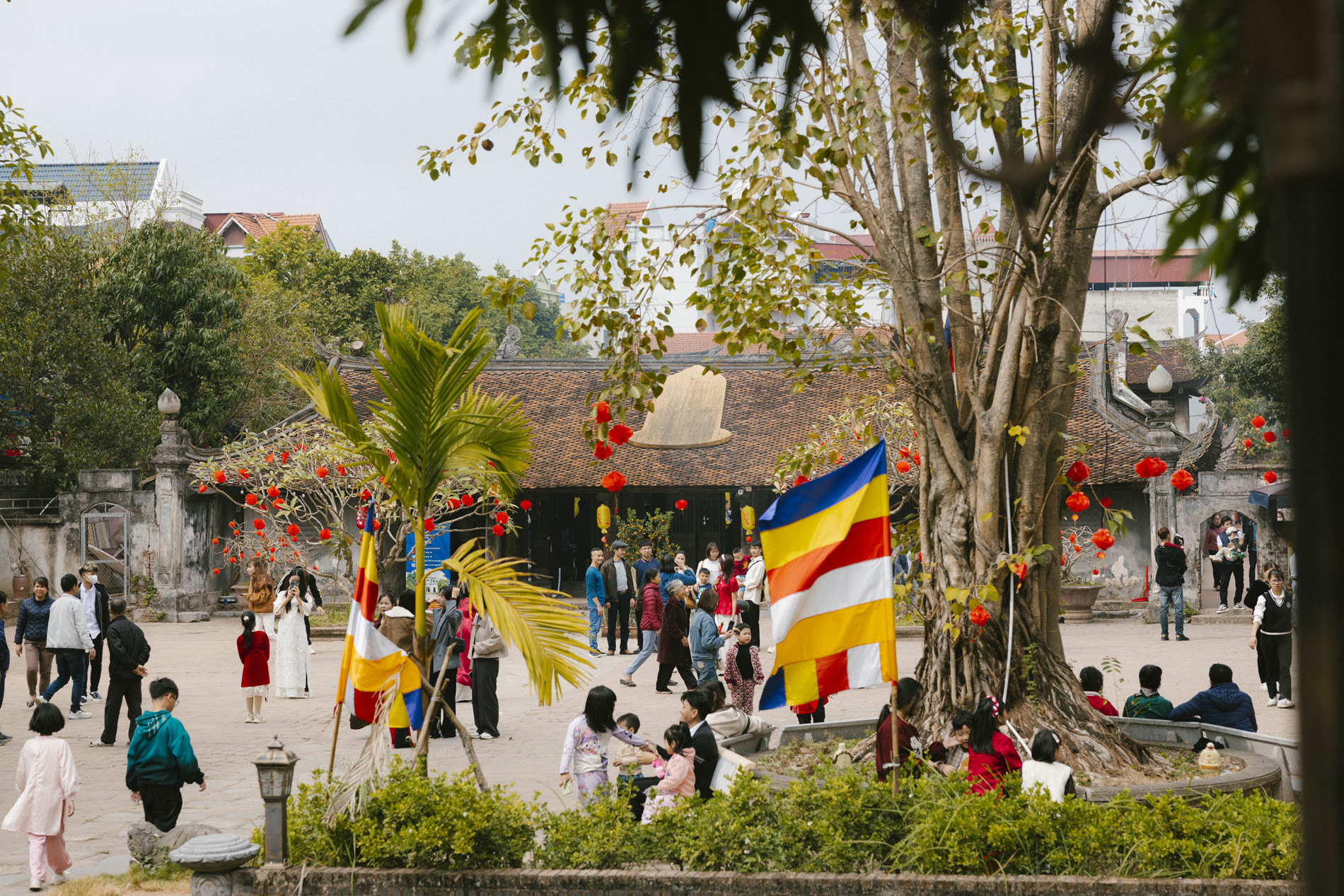
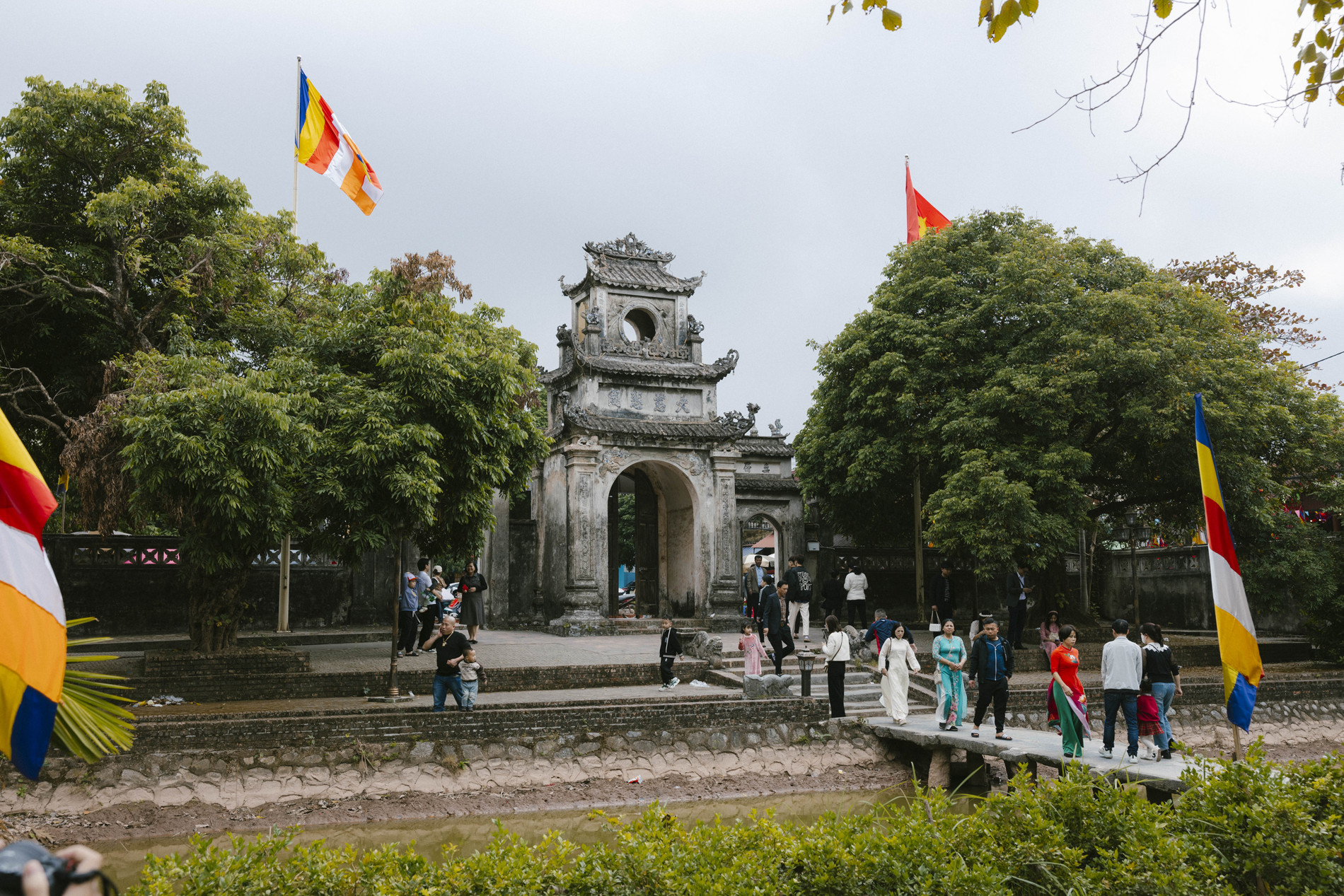
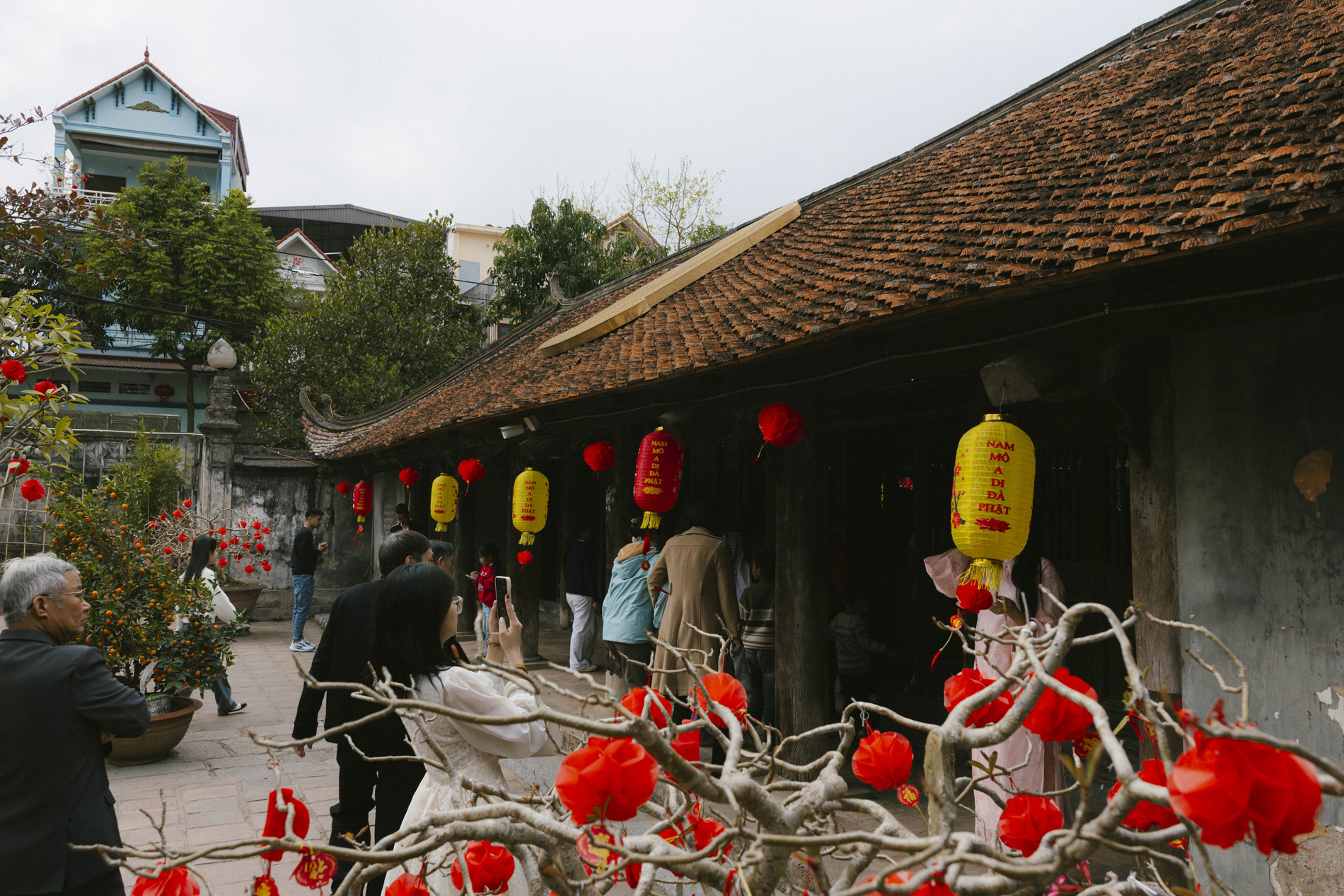
Chuông Temple (also known as Kim Chung Temple) is a popular spring destination near Hanoi, attracting numerous visitors for sightseeing and worship at the beginning of the year.
According to the Management Board of Hung Yen Province’s relics, the ancient temple was constructed in the style of “internal public foreign liaison” along with “four waters returning to the road,” including various items featuring the distinctive architecture and fine arts of the Later Lê dynasty intertwined with the Nguyễn dynasty.
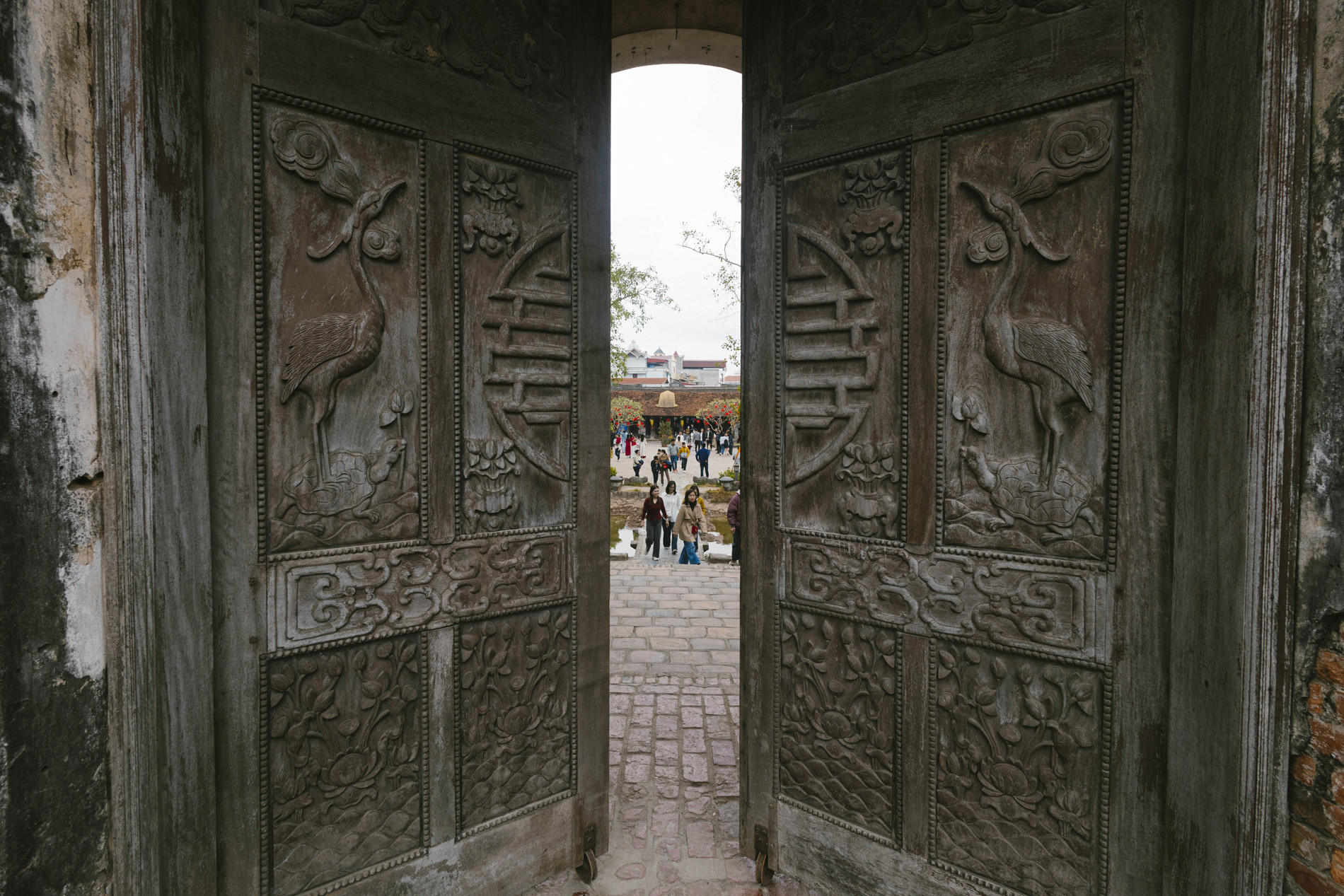
The antique and intricate patterns, as well as the architecture of the Later Lê dynasty, are prominently displayed on the gate and the three-entrance gate.
All items are symmetrically and harmoniously arranged on the axis of symmetry from the three-entrance gate to the mother house, creating a unique architectural style that enhances the temple’s magnificence and solemnity.

In addition to its beautiful and majestic architecture, Chuông Temple still preserves numerous treasures of great artistic, historical, and cultural value, such as horizontal lacquered boards, parallel sentences, bronze bells, and stone gongs…
Among them, the blue stone bridge, the stone incense burner (Thạch Thiên Đài), built in 1702, and especially the stone stele “Kim Chung Tự Thạch Bi Ký,” erected in the 7th year of Vĩnh Thịnh (1711), describing the scenery within the temple and listing the names of those who contributed to its construction, stand out.
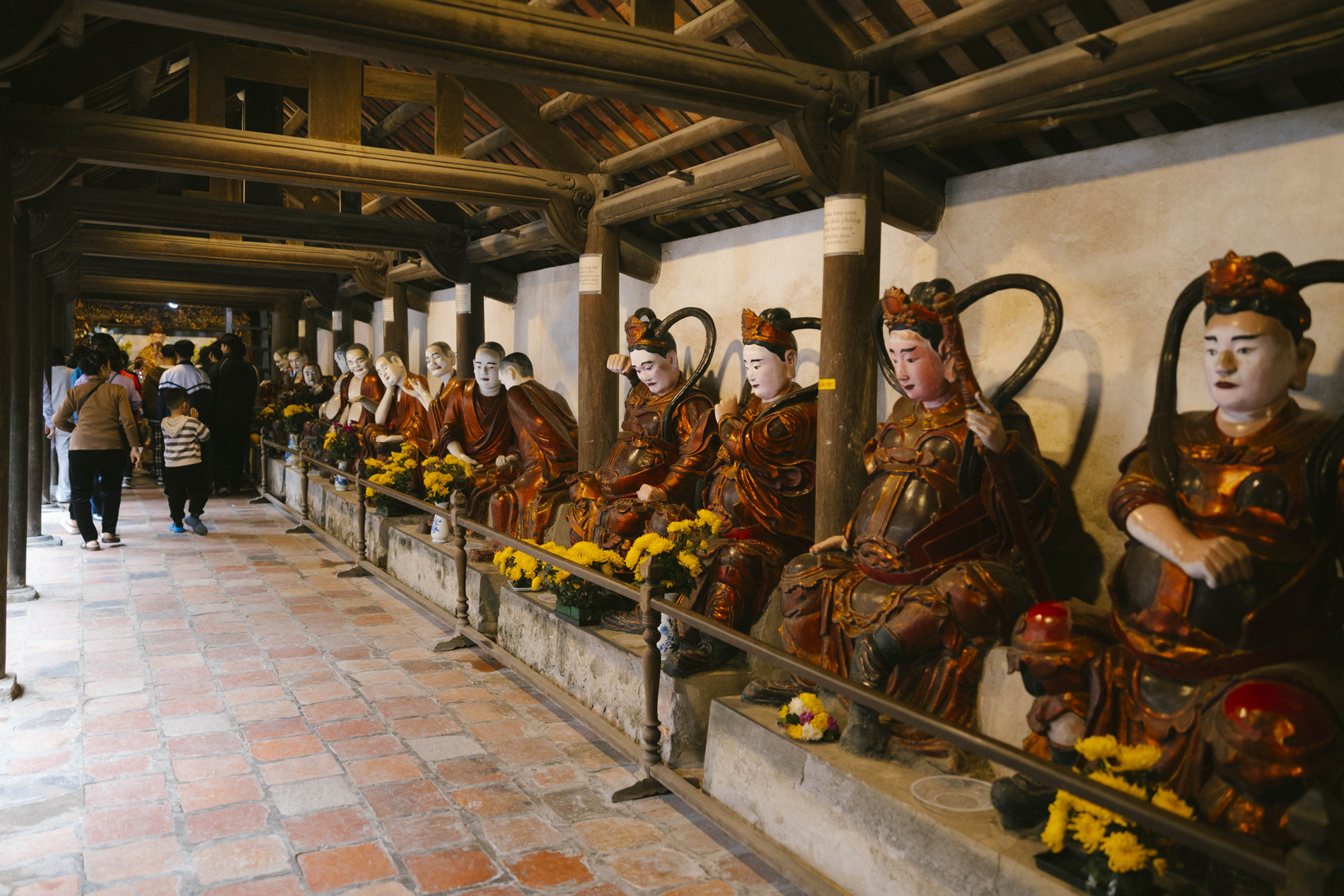
Another impressive feature that visitors will notice when visiting Chuông Temple is the diverse collection of Buddhist statues. Notably, the Eight Departments of Vajra, Eighteen Arhats, Ten Courts of Yama, along with the Four Towns, and two Dharma Protectors are arranged along the two corridors.
Each statue exhibits a distinct expression and posture, meticulously crafted by the artists of that time. These statues are also invaluable cultural heritages and precious historical sources for researchers exploring the relics, landmarks, and history of the ancient Pho Hien region.
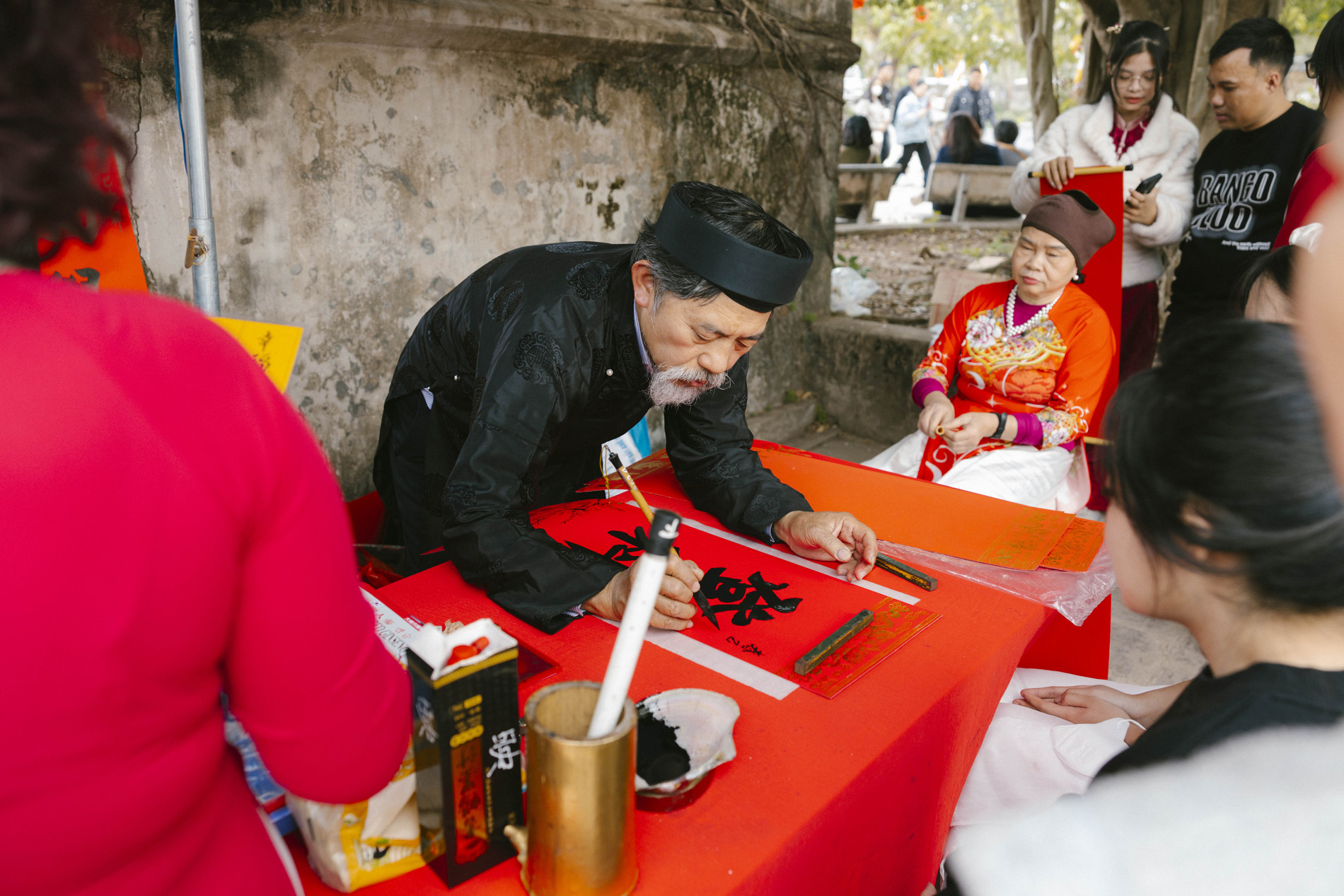
With its unique architectural and historical values, Chuông Temple was ranked as a National Historical and Artistic Architectural Relic by the Ministry of Culture, Sports, and Tourism in 1992. The temple is also one of the 16 most representative relics in the Pho Hien relic complex.
Every year, on the 15th day of the first lunar month, the 8th of April, the 15th of April, and the 15th of July, Chuông Temple attracts a large number of local people and tourists from all over the country.

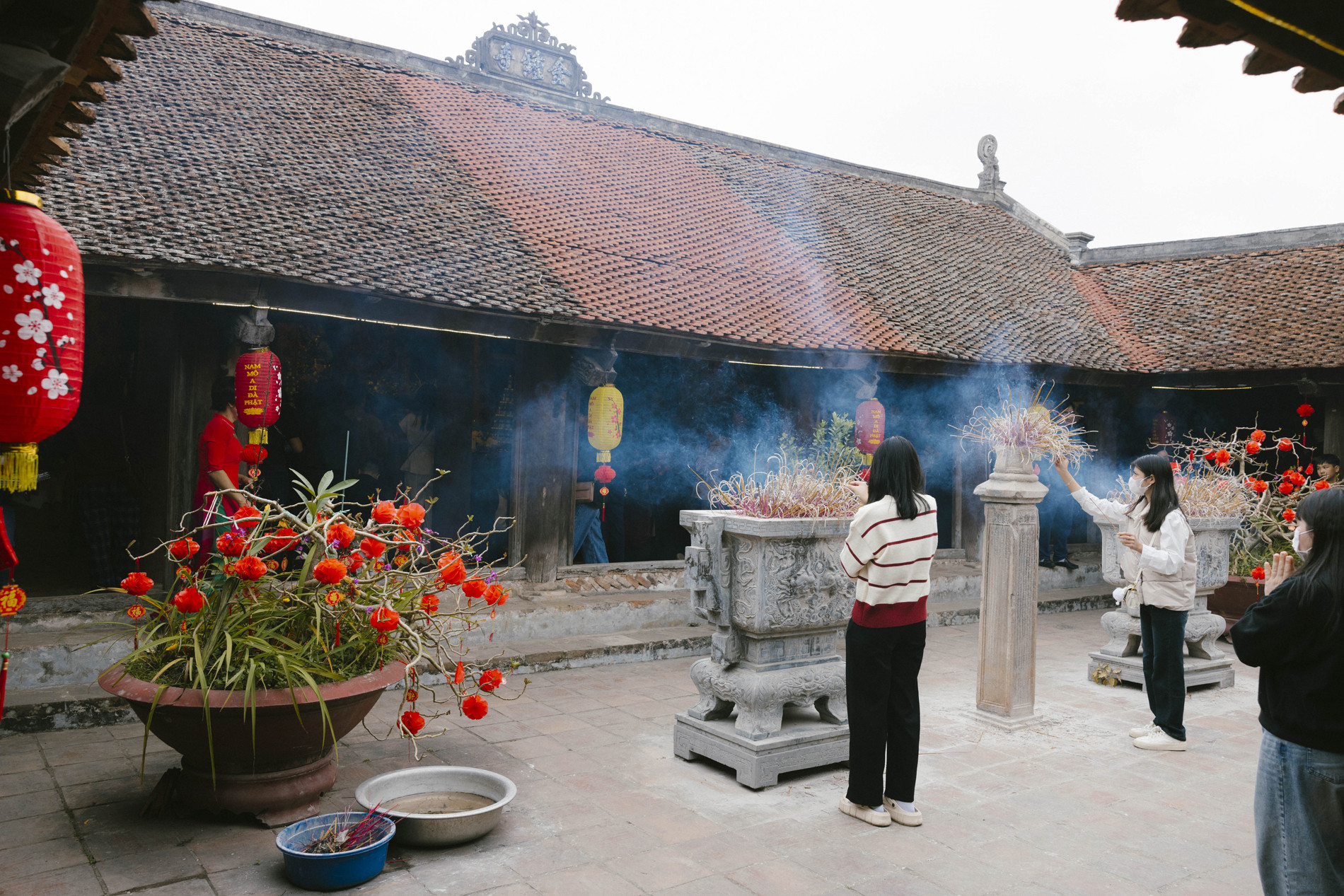
As Chuông Temple is a spiritual tourist destination, visitors are advised to dress modestly and follow the temple’s regulations and rituals while maintaining order and public hygiene…
When visiting Chuông Temple, tourists can also explore other fascinating local attractions, such as the Temple of Chử Đồng Tử (in Khoái Châu District), Nôm Village (Đại Đồng Commune, Văn Lâm District), Phúc Lâm Pagoda (Phù Ủng Commune, Ân Thi District), and more.
Additionally, don’t forget to indulge in some famous local specialties like eel vermicelli soup, longan fruit, Phú Thị rice rolls, Tiểu Quan chicken ham, and Văn Giang gear cake…
The Heart of Hanoi: A Glimpse into the Past at this Rustic Market
The Nu’a Market is a periodic gathering held in Phu Binh, a commune in the Thach That district of Hanoi. It is one of the few rural markets that have preserved the ancient cultural traditions and customs, with stalls offering a unique array of produce and goods characteristic of the rustic countryside.
A Walk Through Hanoi’s Antique Market: A Time-Honored Tradition.
The annual antique fair, held on the intersection of five iconic streets – Hang Cot, Hang Luoc, Hang Ruoi, Cha Ca, and Hang Khoai – is a unique cultural phenomenon in Hanoi. This singular event, taking place on the 20th of the 12th lunar month, marks the arrival of the Tet holiday and the coming of spring.
A Rare Village Market in the Heart of the Capital City: A Step Back in Time to the Charm of a Bygone Era
As the year draws to a close and the festive spirit of Tet fills the air, Sau Gia’s rural market (located in Duong Lieu, Hoai Duc, Hanoi) transforms into a bustling hub for the suburban community. Beyond being a vibrant marketplace, the market encapsulates the essence of traditional culture, evoking a sense of familiarity and nostalgia for the Tet celebrations of yesteryear.
The Captivating Charm of Hanoi’s Streets: A Floral Fiesta for the Eyes
The streets and alleys of Hanoi are adorned with vibrant red and gold flags and banners celebrating 50 years of national reunification. This colorful display has transformed the city into a vibrant hub, attracting locals and tourists alike to come together and celebrate this momentous occasion. The festive atmosphere, with its vibrant decorations and celebratory spirit, provides the perfect backdrop for visitors to immerse themselves in the culture and create lasting memories.

























